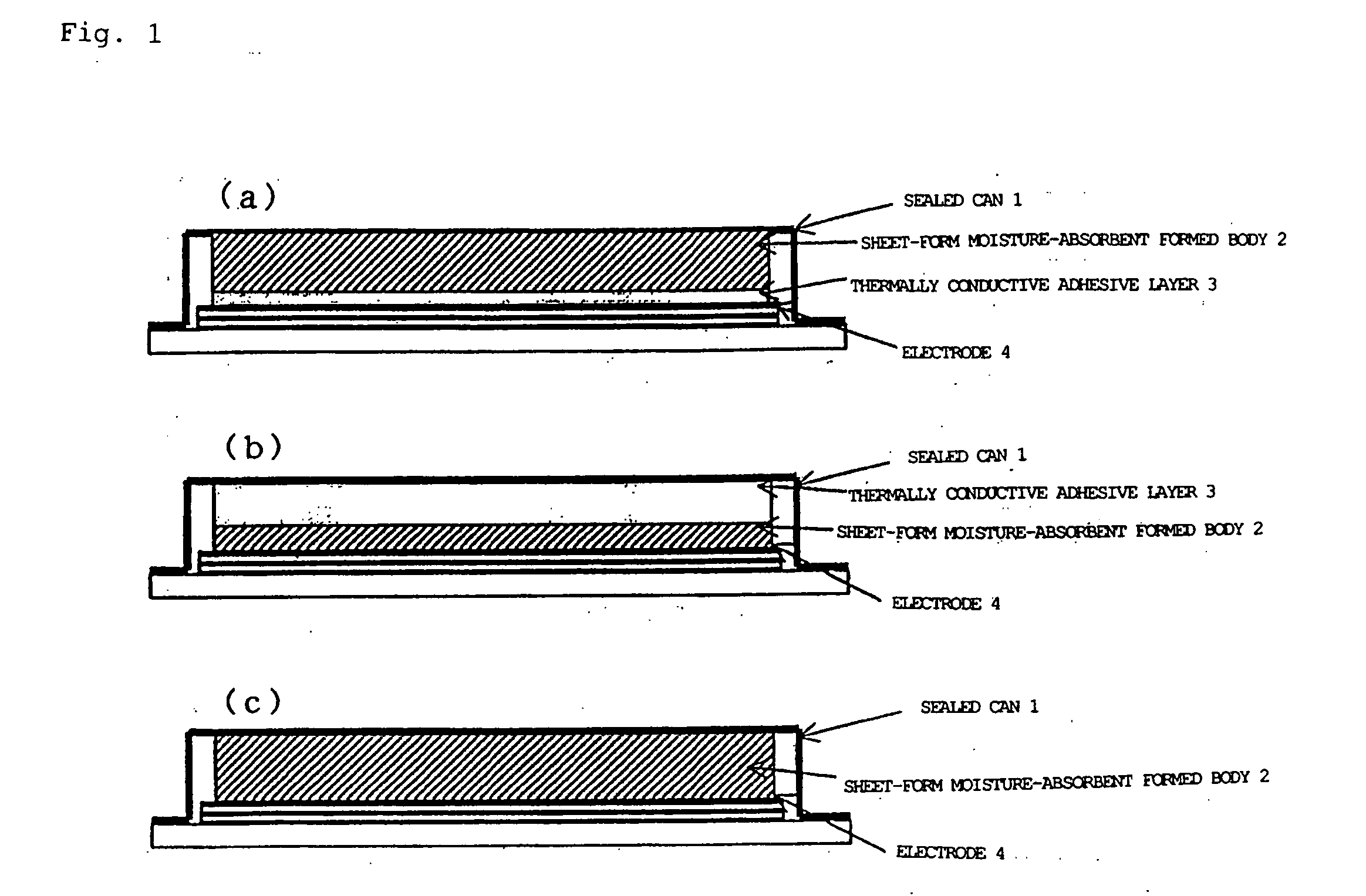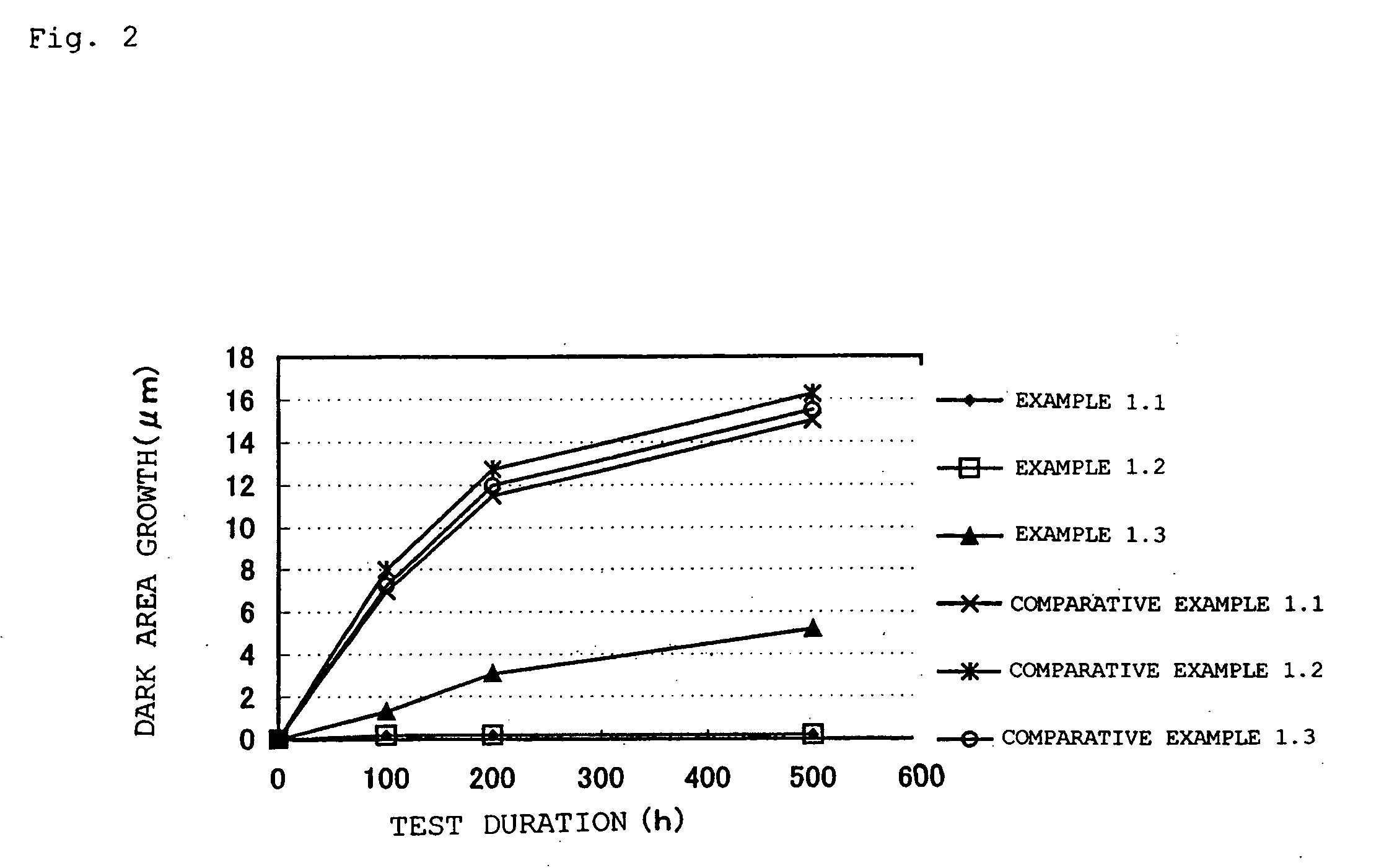Hygroscopic molding
a technology of moisture absorption and molding, which is applied in the direction of transportation and packaging, other chemical processes, natural mineral layered products, etc., can solve the problems of non-light-emitting regions, modification or separation of constituent materials, and decrease in the performance of electronic parts, so as to achieve easy and reliable removal, good moisture absorption, and excellent thermal conductivity
- Summary
- Abstract
- Description
- Claims
- Application Information
AI Technical Summary
Benefits of technology
Problems solved by technology
Method used
Image
Examples
example 1.1
[0074] A sheet-form moisture-absorbent formed body was produced as follows.
[0075] 60 wt % CaO powder (average particle size: 10 μm) with a BET specific surface area of 45 m2 / g was used as the hygroscopic agent, 5 wt % hydrazide compound (trade name “Chemcatch H-6000”, made by Otsuka Chemical) was used as the amine compound, and 35 wt % fluororesin (polytetrafluoro-ethylene (PTFE)) was used as the resin component. These components were thoroughly mixed in the form of powders. The resulting mixture was formed into a sheet with a calender roll, which gave a sheet with a thickness of 200 μm. This sheet was subjected to heat treatment for 10 minutes at 180° C. The sheet thus obtained had a porous structure containing CaO, and in which the PTFE resin was fibrillated.
example 1.2
[0076] A sheet-form moisture-absorbent formed body having a thickness of 200 μm was obtained in the same manner as in Example 1.1 except that 60 wt % SrO powder (average particle size: 10 μm) with a BET specific surface area of 3 m2 / g was used as the hygroscopic agent, 5 wt % hydrazide compound (trade name “Chemcatch H-6000”, made by Otsuka Chemical) was used as the amine compound, and 35 wt % fluororesin (polytetrafluoro-ethylene (PTFE)) was used as the resin component.
example 1.3
[0077] A sheet-form moisture-absorbent formed body with a thickness of 200 μm was obtained in the same manner as in Example 1.1 except that 60 wt % CaO powder (average particle size: 10 μm) with a BET specific surface area of 45 m2 / g was used as the hygroscopic agent, 5 wt % N,N′-di-2-naphthyl-p-phenyldiamine (trade name “Nocrac White”, made by Ouchi Shinko Chemical Industries) was used as the amine compound, and 35 wt % fluororesin (polytetrafluoro-ethylene (PTFE)) was used as the resin component.
PUM
| Property | Measurement | Unit |
|---|---|---|
| specific surface area | aaaaa | aaaaa |
| density | aaaaa | aaaaa |
| specific surface area | aaaaa | aaaaa |
Abstract
Description
Claims
Application Information
 Login to View More
Login to View More - R&D
- Intellectual Property
- Life Sciences
- Materials
- Tech Scout
- Unparalleled Data Quality
- Higher Quality Content
- 60% Fewer Hallucinations
Browse by: Latest US Patents, China's latest patents, Technical Efficacy Thesaurus, Application Domain, Technology Topic, Popular Technical Reports.
© 2025 PatSnap. All rights reserved.Legal|Privacy policy|Modern Slavery Act Transparency Statement|Sitemap|About US| Contact US: help@patsnap.com


